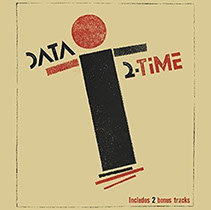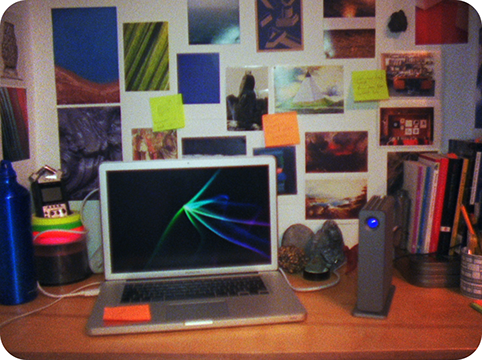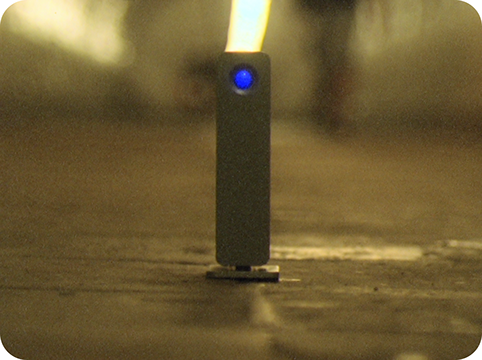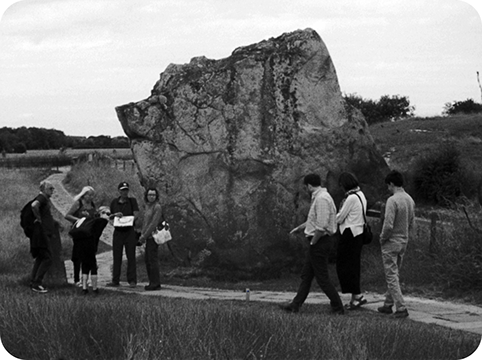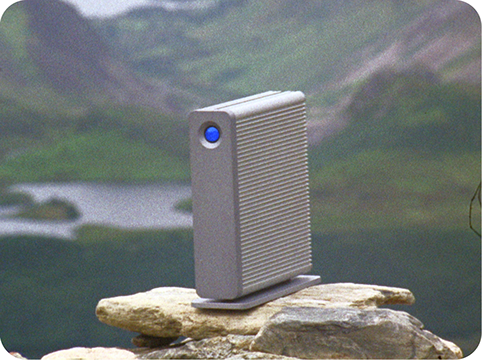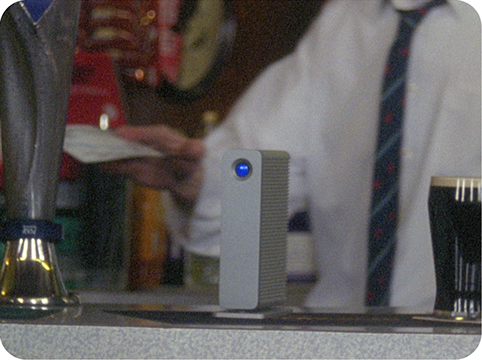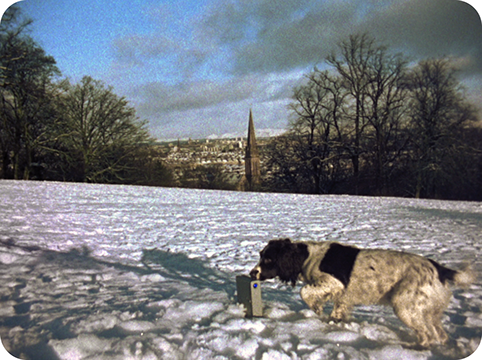

 is a speculative multidisciplinary arts project and film exploring memory, data, archives, archaeology, humanism and futurity.
is a speculative multidisciplinary arts project and film exploring memory, data, archives, archaeology, humanism and futurity.sunrisewithseamonsters.com is a home and contextual space for the 2019 film and project as a whole. The project and website is a broad archive of people, ideas, stories and technologies exploring the who, how, when and why of data storage technologies, information preservation, digital archives & heritage, deep-time archaeology, personal memory and speculative human futures.
This website also is also a space to present original films and artwork that contextualises and re-imagines the research through experimental and biographical exploration, as with the 2019 film Sunrise With Sea Monsters. With this nebula of visual work and research, the project will continue to question the ambitious endeavour of preserving our memories, data and knowledge for an uncertain future and unknown human or non-human recipients.
The project and film have been developed by Glasgow based artist and filmmaker Myles Painter. For further information click on the menu tabs below and follow the projects Facebook and Twitter via the links at the bottom of the page.

 charts the absurdly prophetic journey of a humble hard drive from the domestic shelter of the desktop and out into the perilous romance of the British landscape to explore speculative ideas on memory, data, humanism and futurity. Captured entirely on 16mm film stock with an old clockwork Bolex camera, the hard drive embarks on a quest of self-discovery to reveal an odyssey of sci-fi tech, global archives, digital apocalypses, metaphysical data, non-human futures, and memory failure.
charts the absurdly prophetic journey of a humble hard drive from the domestic shelter of the desktop and out into the perilous romance of the British landscape to explore speculative ideas on memory, data, humanism and futurity. Captured entirely on 16mm film stock with an old clockwork Bolex camera, the hard drive embarks on a quest of self-discovery to reveal an odyssey of sci-fi tech, global archives, digital apocalypses, metaphysical data, non-human futures, and memory failure.The film features conversations between myself (
 ) and pioneering technologists who are developing emerging data storage technologies for the long-term preservation of human knowledge and radical thinkers who are questioning the nature of reality, data, and the future of humanity. Animated by these voices, the hard drive traverses a vast cinematic landscape to ask the who, how, when and why we will be remembered in the future and by whom?
) and pioneering technologists who are developing emerging data storage technologies for the long-term preservation of human knowledge and radical thinkers who are questioning the nature of reality, data, and the future of humanity. Animated by these voices, the hard drive traverses a vast cinematic landscape to ask the who, how, when and why we will be remembered in the future and by whom?

Individuals featured in the film include
 &
&  , doomsday technologists who are part of a team at Piql in Norway that has developed a way to store digital information on celluloid film in an Arctic World Vault. Also, biotechnologist
, doomsday technologists who are part of a team at Piql in Norway that has developed a way to store digital information on celluloid film in an Arctic World Vault. Also, biotechnologist  who has pioneered a molecular biological hard drive that can store all the worlds data and
who has pioneered a molecular biological hard drive that can store all the worlds data and  whose technology, the 5D Memory Crystal was fired into space to orbit the sun for eternity. The film also explores Memory of Mankind, a comprehensive archive of human stories stored inside of a mountain in Austria, overseen by its enigmatic founder
whose technology, the 5D Memory Crystal was fired into space to orbit the sun for eternity. The film also explores Memory of Mankind, a comprehensive archive of human stories stored inside of a mountain in Austria, overseen by its enigmatic founder  . Information Scientist
. Information Scientist  celebrates the fascinating and surprising history of data storage technologies, and Product Designer
celebrates the fascinating and surprising history of data storage technologies, and Product Designer  laments his design for the star of the film, the LaCie D2 Hard Drive. Interwoven throughout the film, philosophers
laments his design for the star of the film, the LaCie D2 Hard Drive. Interwoven throughout the film, philosophers  and
and  divulge radical ideas about the ephemeral nature of data and our future non-human ancestors through a hallucinatory exploration of metaphysical and posthuman thought. Punctuating the film are moments that intimately expose the fallibility of memory, revealed through a personal conversation with my own partner,
divulge radical ideas about the ephemeral nature of data and our future non-human ancestors through a hallucinatory exploration of metaphysical and posthuman thought. Punctuating the film are moments that intimately expose the fallibility of memory, revealed through a personal conversation with my own partner,  during which, while on a walk with our dog Fingal, we share the often fond, but fraught memories of the film's five-year production.
during which, while on a walk with our dog Fingal, we share the often fond, but fraught memories of the film's five-year production.For more information on and links to the research, technologies and ideas presented in the film and abridged versions of each conversation featured please click on the '
 ' tab below.
' tab below.

 features music composed by 70’s Synth-Pop band
features music composed by 70’s Synth-Pop band  , pioneering American electronic composer
, pioneering American electronic composer  and experimental Ukrainian producer
and experimental Ukrainian producer 
Click on the names below for more information on each musician.

 was an electronic music band created in the late 1970’s by George Kajanus, a Norwegian composer best known as the lead singer and songwriter of the British pop group Sailor. Kajanus left Sailor in 1978 to form DATA with Frankie and Phil Boulter. DATA released three albums, Opera Electronica (1980), 2-TiME (1983) and Elegant Machinery (1985). The tracks Data Plata and Opera Electronica that feature in the film come from the first two albums which are available to purchase on Angel Air Records - click on record sleeves for links
was an electronic music band created in the late 1970’s by George Kajanus, a Norwegian composer best known as the lead singer and songwriter of the British pop group Sailor. Kajanus left Sailor in 1978 to form DATA with Frankie and Phil Boulter. DATA released three albums, Opera Electronica (1980), 2-TiME (1983) and Elegant Machinery (1985). The tracks Data Plata and Opera Electronica that feature in the film come from the first two albums which are available to purchase on Angel Air Records - click on record sleeves for linksGeorg Kajanus’ personal website:
www.kajanus.com

 is a pioneering American electronic composer who has been making computer music since the 1970’s. In the 70’s and 80’s Spiegel worked as an in-house composer, developer, and programmer at Bell Laboratories in New York in the Experimental Research Facility. The two tracks used in the film are Patchwork, The Unanswered Question and The Expanding Universe from Spiegel’s debut album The Expanding Universe (1980) which was created on the GROOVE System at Bell Labs. Her next album Unseen Worlds (1991) was created by her own computer program creation ‘Music Mouse’ which she created on a Macintosh 512k. Both albums have recently been rereleased and are available to be purchased on Unseen World Records - click on record sleeve for link
is a pioneering American electronic composer who has been making computer music since the 1970’s. In the 70’s and 80’s Spiegel worked as an in-house composer, developer, and programmer at Bell Laboratories in New York in the Experimental Research Facility. The two tracks used in the film are Patchwork, The Unanswered Question and The Expanding Universe from Spiegel’s debut album The Expanding Universe (1980) which was created on the GROOVE System at Bell Labs. Her next album Unseen Worlds (1991) was created by her own computer program creation ‘Music Mouse’ which she created on a Macintosh 512k. Both albums have recently been rereleased and are available to be purchased on Unseen World Records - click on record sleeve for link
Laurie Spiegel’s personal website:
www.lauriespiegel.net


08.2018
Test audience screening at the CCA in Glasgow alongside Morwenna Kearsley's film Cives Grati!
09.06.19 / 11.06.19
World Premiere at Sheffield Doc/Fest 2019 - The light Cinema and Curzon Cinema
09.11.19
Aesthetica Short Film Festival - York Theatre Royal
15.11.19
Istanbul International Experimental Film Festival - Vault 34
19.01.20
Deptford Cinema - Presented by Wavelength Docs
28.09.20
ACHS 2020 Futures Conference - Screening and Panel Discussion












































<
>

Info
Each person on this page has contributed their stories, knowledge and technology to the project and film as a conversation recorded either in person or via the web and available here in their entirety.
Hover mouse over name then click for more info.



